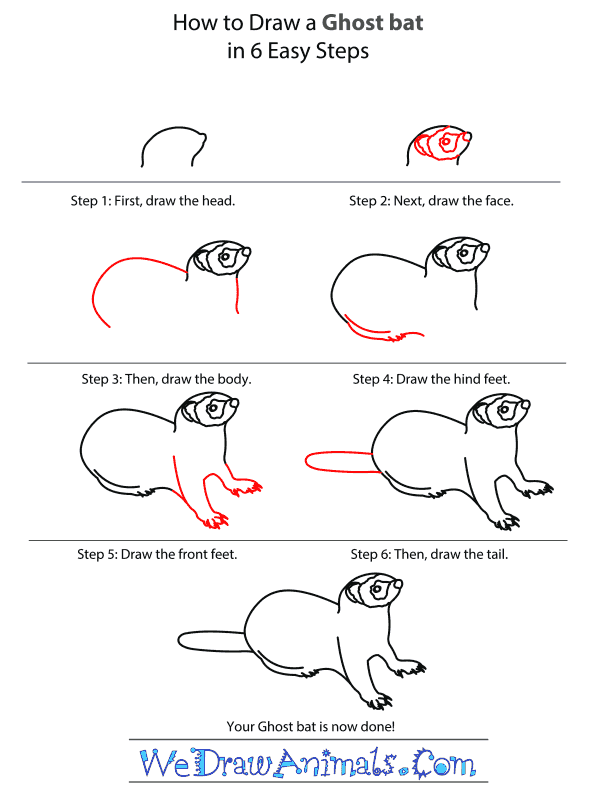In this quick tutorial you'll learn how to draw an European Polecat in 6 easy steps - great for kids and novice artists.
The images above represent how your finished drawing is going to look and the steps involved.
Below are the individual steps - you can click on each one for a High Resolution printable PDF version.
At the bottom you can read some interesting facts about the European Polecat.
Make sure you also check out any of the hundreds of drawing tutorials grouped by category.
How to Draw an European Polecat - Step-by-Step Tutorial
Step 1: First, draw the head, which comes to a point for the nose at the top. Make sure to leave space at the bottom for the neck
Step 2: Next, you'll draw the face. Draw circle for the nose at the tip, and then a circle for the eyes. Draw lines and circles to make the next, an ear, and fur
Step 3: Draw the body next. Draw a line down from the right of the next, and then a large half circle starting from the left of the neck.
Step 4: Now you'll draw the hind feet, which is pretty small in comparison. Make a curved line parallell to the body as well as claws at the end of the foot.
Step 5: Now draw the front feet, which are bigger. Use the line you made in step 3 to create the first leg, and then make the second leg. Make sure to add claws to ends of the feet.
Step 6: Finally, draw an ovel at the back of the animal to make the tail.
Interesting Facts about the European Polecat
The European polecat is a mammal in the mustelid family. This family is also known as the weasel family and includes weasels, wolverines, otters, and ferrets. They are found throughout most of Europe. The European polecat has a lender body, short legs, and a broad head. Males are larger and heavier than females. Their average weight is from 0.7 to 1.4 kilograms. European polecats have a black colored coat. Their tail length is from 12 to 19 centimeters, and their head to body length ranges from 35 to 51 centimeters. These animals are nocturnal. The European polecat is a carnivore that eats rodents, amphibians, rabbits, birds, insects, and eggs.
Did you know?
- The European polecat is also known as the black or forest polecat.
- These animals are solitary and will defend their territory.
- The European polecat lives in lowland areas.
- Baby European polecats are called kits.
- At birth, kits weigh 9 to 10 grams and are blind and deaf. The kits become independent after about two to three months.
Lesson plan note: Draw a large picture of the European polecat. Make copies and distribute to each child. Have the children use markers, crayons, or colored pencils to color their polecat. Hang each European polecat on the bulletin board for everyone to see.







